This review of Hersilia’s Sisters: Jacques-Louis David, Women, and the Emergence of Civil Society in Post-Revolution France by Norman Bryson appears in the May 2024 issue of Apollo. Preview and subscribe here.
The Intervention of the Sabine Women (1799) by Jacques-Louis David has always been a divisive picture. In 1824 it seemed ‘worthy’ but ‘boring’ to Stendhal, who found its figures ‘without passion’ and noted that ‘in any country it is absurd to march off to battle with no clothes on’. Painted on a huge scale, it represents combatants and victims of all ages and different classes, a total picture of ancient society that echoed the French Revolutionary festivals. David, pageant master of those festivals, bisected this frieze of martial, male nudity – depicting the confrontation between the warriors Tatius and Romulus in the foreground – with the onrush of women led by Hersilia, daughter of the former and wife to the latter, who with a single, determined gesture seeks to end the fighting. A courageous and athletic figure, Hersilia mediates between the claims of kinship and the state and, for Norman Bryson, escapes from all the conventional signifiers of the patriarchal order. She is the prototype for other gender-defying heroism in French art in the 1830s, from Francois Rudé’s Genius of Liberty on the Arc de Triomphe to Ingres’s Saint Symphorien and Delacroix’s Marianne on the barricades.
 In making sense of this allegory of female power, scholars such as Ewa Lajer-Burcharth have looked to the artist’s fractured and traumatised psyche or devotion to his wife. Bryson, by contrast, places the Sabines in a wider socio-cultural landscape, in which the new visibility of female authors, musicians and painters represented the healing of French society after the Terror. The hierarchy of genres was buckling, as portraiture came to rival history painting, and cultural institutions became more democratic, creating conditions in which female artists of all stripes could thrive.
In making sense of this allegory of female power, scholars such as Ewa Lajer-Burcharth have looked to the artist’s fractured and traumatised psyche or devotion to his wife. Bryson, by contrast, places the Sabines in a wider socio-cultural landscape, in which the new visibility of female authors, musicians and painters represented the healing of French society after the Terror. The hierarchy of genres was buckling, as portraiture came to rival history painting, and cultural institutions became more democratic, creating conditions in which female artists of all stripes could thrive.
The circumstances in which David displayed The Intervention of the Sabine Women heightened this effect. Located in a special room within the Louvre, but which mimicked the ‘house style’ of the public galleries being rearranged next door, the painting invited comparisons with the Italian school, but also encouraged the spectators to see themselves as part of the action thanks to the installation of a mirror. A play at the Opéra-Comique satirised the fusion of ancient warfare and contemporary, classicising fashions with a final tableau vivant in which swords, shields and javelins transformed into hats, canes and umbrellas.
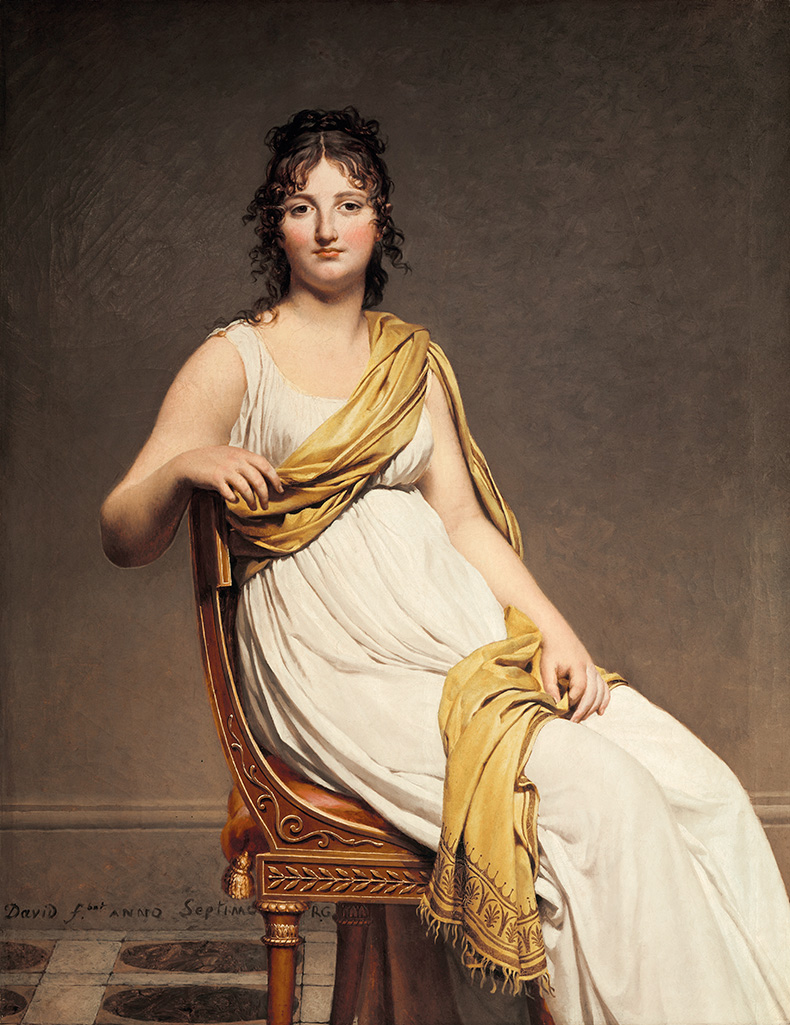
Portrait of Madame de Verninac (1799), Jacques-Louis David. Musée du Louvre, Paris. Photo: Maurice Baby/akg-images
David’s interest in modern analogies was reinforced by a plan in 1800 to exhibit alongside the Sabines two portraits of living women: the salonnières Henriette de Verninac and Juliette Récamier. This proposal has been forgotten compared to the masculine trio he previously installed in the National Assembly, comprising the Tennis Court Oath and the portraits of the martyred revolutionaries le Peletier and Marat. For Bryson the proposed triptych in 1800 was a statement about the civic role of women: the two portraits were inspired, in different ways, by the sculpture of Agrippina the Elder at the Capitoline. What’s more, Verninac’s seated pose is so closely modelled on the portrait of the poet and librettist Constance Pipelet, exhibited by Desoria at the Salon of 1798, as to be a deliberate fusion of a Roman matrona with ‘one of the most powerfully independent women in the contemporary world’.
Hersilia’s Sisters opens with the Sabines but then takes up the wider question of French cultural politics and the politics of gender in the late 1790s – a period which has finally begun to attract new scholarship, some of which is synthesised and credited here. Bryson captures the ambivalence of the Directory years (1795–99), synonymous both with the contraction of the political realm, with electoral disenfranchisement, censorship and repression, but also the creation of ‘civil society’. It was the growth of this domain of private interests, beyond the collectivism of the state, that distinguished modern from ancient republics – and also, as thinkers such as Charles-Guillaume Théremin and Pipelet argued, ensured a greater presence for modern women beyond the household.
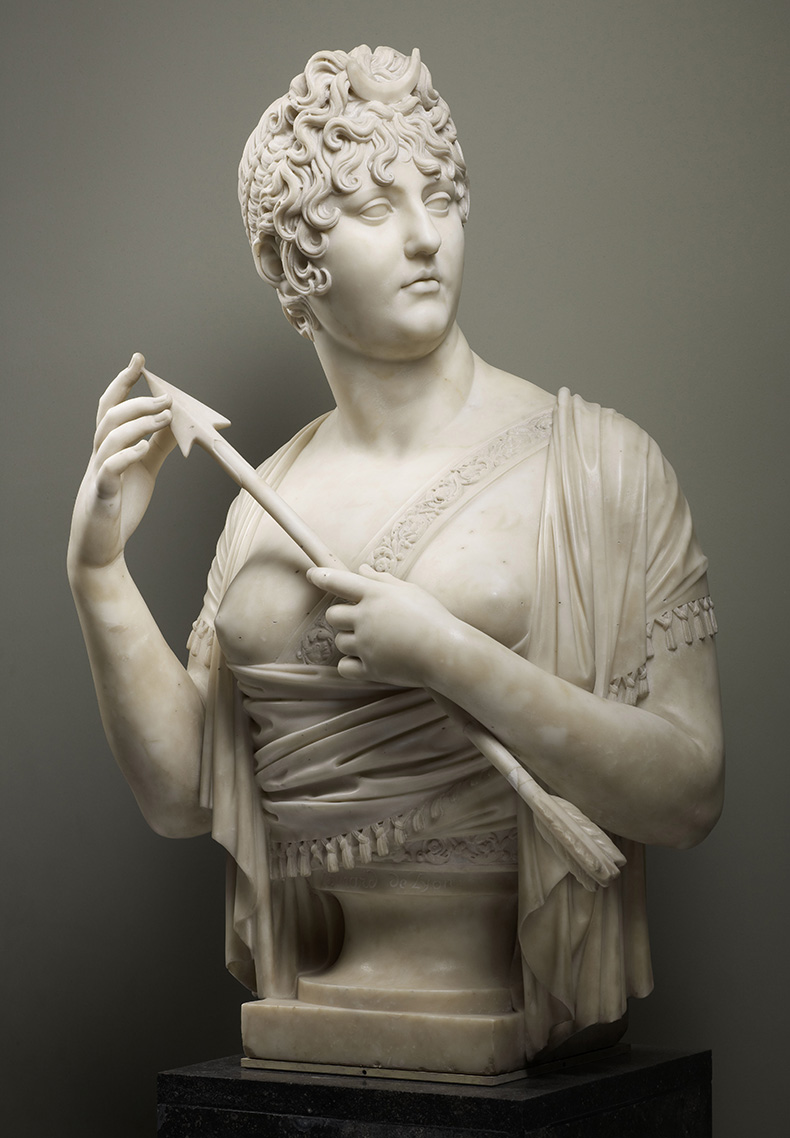
Henriette de Verninac as Diana the Huntress (c. 1808), Joseph Chinard. Musée du Louvre. Photo: Thierry Ollivier; © RMN-Grand Palais/Art Resource, NY
Bryson writes with flair about the ‘morphology’ of neoclassicism, its immaculate finish, sharp contours and seductive lines. He draws out the erotic humour in Joseph Chinard’s portrait bust of Verninac, posing as Diana on the hunt for conquests, just as he revels in the voyeurism required by the same artist’s terracotta of Récamier, an ‘overpowering presence’ now in the Getty. We are reminded of painters such as Marie Bouliard; her much-admired Aspasia (1794) is a disarmingly brazen celebration of the Athenian courtesan and lover of Pericles who proved that female wit and sexuality could be reconciled. Bryson’s formal readings are as entertaining as they are idiosyncratic, replete with operatic analogies; his instinct for anecdote and the nexus of biographical relationships is unerring. By taking seriously the ‘studio story’ of the real women who supposedly posed for the Sabines – namely David’s pupil Natalie de Noailles (heiress to an illustrious and tragic noble family) and the Bellegarde sisters (Jacobin widows whose experiences reflected the violent contrasts of Revolutionary politics) – he throws the contemporary stakes of the ancient subject into sharp relief.
In the end, Hersilia’s Sisters covers so much ground that one wonders how far a single painting can help us navigate the swirling and contradictory currents of the Directory. David’s views on his female contemporaries can often be only inferred, and Bryson is perhaps too quick to connect David’s decision to discontinue his proposed feminine triptych to Napoleon’s coup d’état and a broader anti-feminist backlash. At the Louvre, the portraits of Verninac and Récamier were swapped for the double version of Napoleon Crossing the Alps, in Bryson’s words, ‘leaving Hersilia stranded in antiquity, her pathway blocked right and left by the rearing victor of Marengo’. In reality, the paying exhibition remained open until May 1805 and netted David 65,000 francs. The women who had rushed on to the cultural battlefield during the Directory period were not so easily disarmed.
Hersilia’s Sisters: Jacques-Louis David, Women, and the Emergence of Civil Society in Post-Revolution France by Norman Bryson is published by the Getty Research Institute.
From the May 2024 issue of Apollo. Preview and subscribe here.
Unlimited access from just $16 every 3 months
Subscribe to get unlimited and exclusive access to the top art stories, interviews and exhibition reviews.


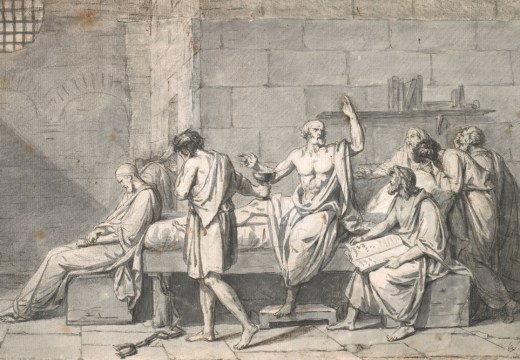
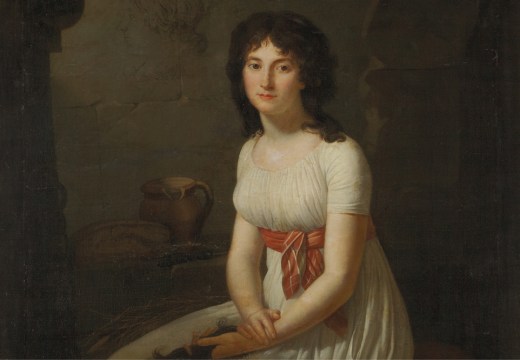
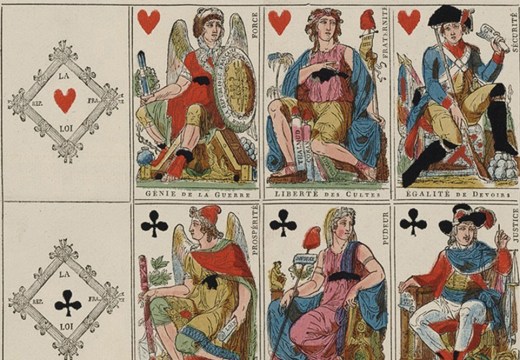









![Masterpiece [Re]discovery 2022. Photo: Ben Fisher Photography, courtesy of Masterpiece London](http://www.apollo-magazine.com/wp-content/uploads/2022/07/MPL2022_4263.jpg)
It’s time for the government of London to return to its rightful home